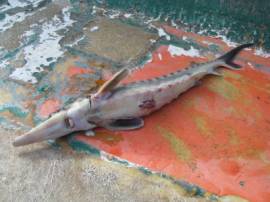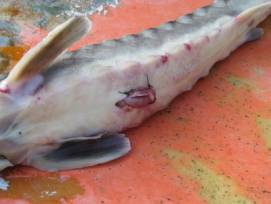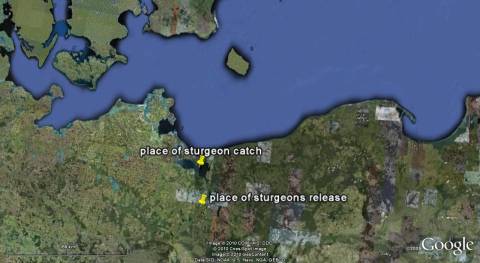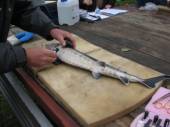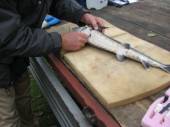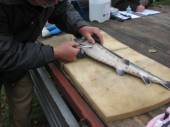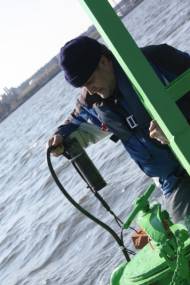|
|
A valuable notification about a sturgeon catchDepartment of Migratory Fish IFI in Gdańsk, Institute of Ecology of Fresh Waters and Inland Fisheries in Berlin and Hel Marine Station UG received the message about catch of the Atlantic sturgeon from Mr Andrew Czapski on 24 May 2010 . The fish was caught in the Szczecin Lagoon on 20 May 2010.
Atlantic sturgeon caught in the Szczecin Lagoon on 20th May 2010The length of the fish amounted 45cm. The sturgeon weighed 300g. The fish has obviously lost its external tag, but it had a visible ventral opening and remains of surgical seams. Probably, the fish has ripped the sealed wound that was opened when fighting in the net. The sturgeon was brought alive to the fishing harbour, where it was measured, weighed and photographed. Besides the wound was gently pieced together, and the fish was released into a region, where was little fishing gear.
The fresh wound and surgical seams quickly permitted to define history of the sturgeon. This fish originated from the group of 10 individuals that were released to Oder River about 5 km North from Gryfino on 6th May 2010. Fish were released to investigate their speed of descending towards the sea. The sturgeons had telemetric transmitters implanted before they were released to the river. Fish were under the narcosis during the treatment. |
<<< BACK |

